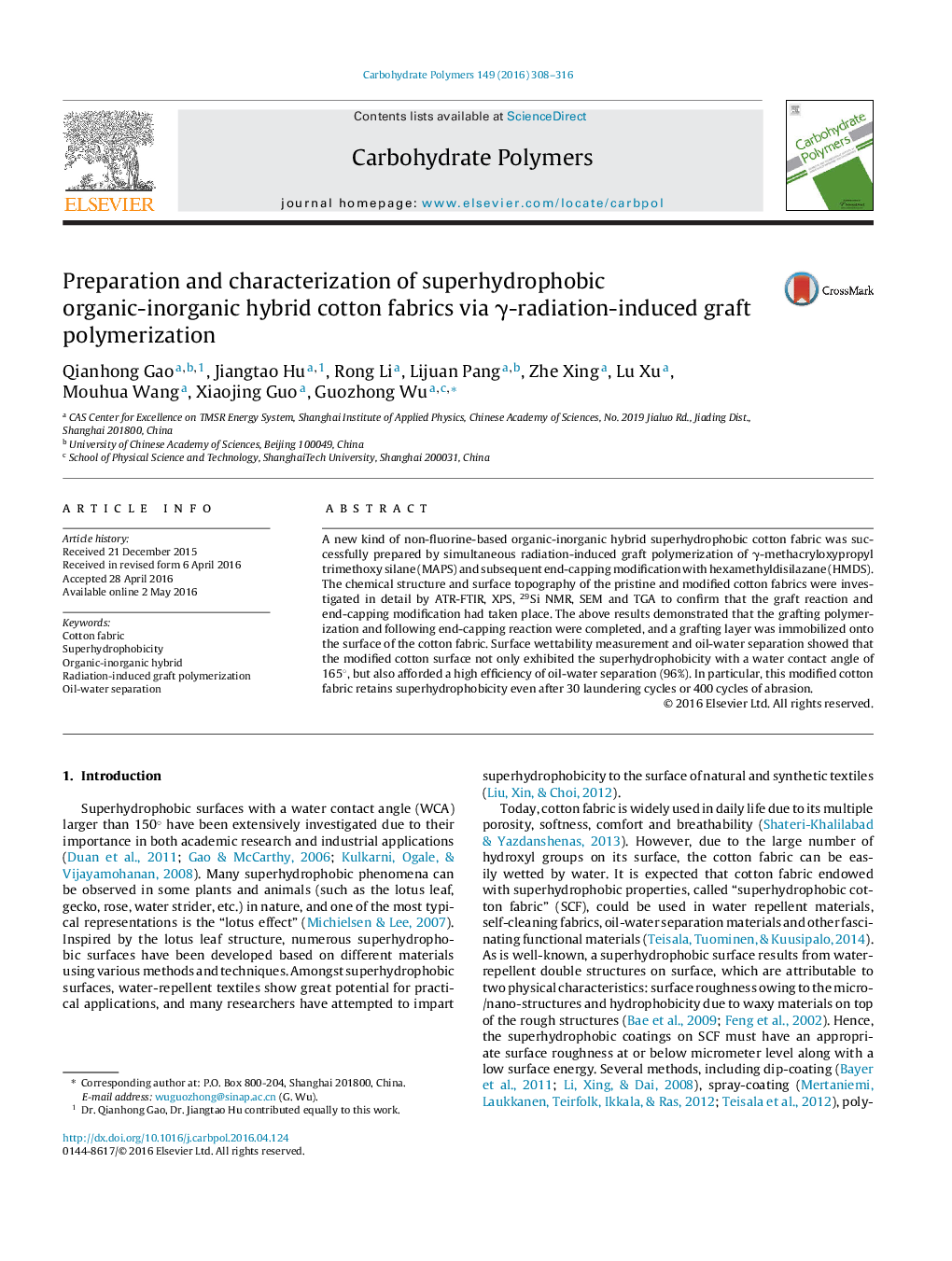| Article ID | Journal | Published Year | Pages | File Type |
|---|---|---|---|---|
| 7785499 | Carbohydrate Polymers | 2016 | 9 Pages |
Abstract
A new kind of non-fluorine-based organic-inorganic hybrid superhydrophobic cotton fabric was successfully prepared by simultaneous radiation-induced graft polymerization of γ-methacryloxypropyl trimethoxy silane (MAPS) and subsequent end-capping modification with hexamethyldisilazane (HMDS). The chemical structure and surface topography of the pristine and modified cotton fabrics were investigated in detail by ATR-FTIR, XPS, 29Si NMR, SEM and TGA to confirm that the graft reaction and end-capping modification had taken place. The above results demonstrated that the grafting polymerization and following end-capping reaction were completed, and a grafting layer was immobilized onto the surface of the cotton fabric. Surface wettability measurement and oil-water separation showed that the modified cotton surface not only exhibited the superhydrophobicity with a water contact angle of 165°, but also afforded a high efficiency of oil-water separation (96%). In particular, this modified cotton fabric retains superhydrophobicity even after 30 laundering cycles or 400 cycles of abrasion.
Keywords
Related Topics
Physical Sciences and Engineering
Chemistry
Organic Chemistry
Authors
Qianhong Gao, Jiangtao Hu, Rong Li, Lijuan Pang, Zhe Xing, Lu Xu, Mouhua Wang, Xiaojing Guo, Guozhong Wu,
